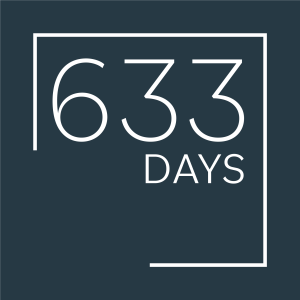CHAPTER TWELVE:
Early Business Failures
CHAPTER TWELVE::
Early Business Failures
Fail early & fail often. Failing late can be disastrous.
was born in a working class family. My parents (who were children of a plumber and an auto mechanic) taught me that hard work and discipline were rewarded with success. I remember looking at a ledger book my grandfather kept. He made 8 cents an hour and recorded every penny of income and expense. My dad never took a day off when I was growing up.
I started a business in 1991 with $5,000. I was an undergrad at Yale at the time and saw an unmet need in the home care market for regulatory
compliance information and launched a home care newsletter. By 1998, my business consisted of 12 people working out of one room full of folding tables and computers. We were struggling to meet payroll and pay our printing bill.
During the 1990s, we built products in the healthcare space and started looking at acquisitions. My first acquisition was for $17,000 in the travel ticketing space just before it disintermediated. That first failed acquisition taught the group a lot about how not to acquire companies.
We survived a major adversity in 1998, when changes in regulations for home care agencies led to the loss of over half of our customers in fewer than six months. We learned from this adversity how to maintain a strict discipline in cutting costs as revenues decline.
I have enormous empathy for the pain of tens of thousands of small business owners who have lost their life’s work because of COVID-19.
Sometimes, a “near-death experience” makes you stronger. My business almost died in 1998, and we were able to diversify our revenue streams and rebuild cash flow. By 2002, we were able to close a “stretch” acquisition for $8 million, which gave us a foothold in the medical coding space.
In 2006, we acquired a health care business with $4.8 million in EBITDA. We put into place new management and implemented our core values using lessons from several prior turnarounds.
We then launched over a dozen product lines. Fourteen years later, that business has multiplied its customer base and has EBITDA of more than $74 million.
In 2007, we opened our first offshore office in Faridabad, India. It became a center for excellence in software development, finance, and leadership. It allowed us to buy companies under stress, cut costs, and invest in development at the same time. Today, we have more than 1,800 employees in India.
In 2009, I survived a brain tumor. I was fortunately able to return to work within a few days after the successful surgery.
During the 2008–2009 timeframe, we perfected a turnaround expertise. Private equity groups noticed the success and started reaching out to the group when they had a business in trouble. We looked for companies that were stuck in a rut.
We developed a turnaround strategy based on core values. At acquisition, the team went into each company and spoke about our unique culture. The team offered flexibility, meritocracy, and unlimited opportunity for growth. In exchange, the team demanded that each employee grow and stretch. “A” players would have their roles expanded, and “C” players needed to go.
The team wanted a company comprising only people who were passionate about what they were doing. Using this turnaround
management expertise, we acquired more than 100 companies between 2009 and 2019. Priceless. You can’t buy this kind of education anywhere at any price. You have to go through it. You have to live it.
